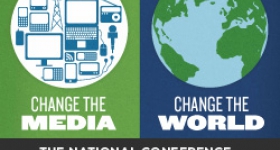Growing up in Chicago’s northern suburbs in the mid-1990s, Jillian Pobocan often felt culturally isolated as one of the few Asian Americans in her area.
But in a shift from previous generations, the emergence of the Internet allowed her to seek connections online. So when she was 17, Pobocan was one of the hundreds of thousands of Asian Americans to sign up for Asian Avenue, a race-based online community that has been credited as the second social networking website ever created, after sixdegrees.com.
“There were a lot of people I met on there with similar backgrounds, who were [also] one of the few Asian students [in their areas],” Pobocan said.
Yet today, Pobocan, now 29, hardly ever visits Asian Avenue, as its popularity has declined amid the explosion of competing social networking websites. What was once a nexus of the pan-Asian online community for the new millennium has lost followers to blogs and other popular social media platforms.
Facebook has been especially popular for Asian Americans, according to a user demographic report released by the website last year. Based on surnames and US Census data, since 2005, Asian Americans have been more likely to use Facebook than any other racial group, including whites.
When Asian Avenue first launched in 1997, the digital landscape was a new frontier: The ideaof an online community was in its infancy and email was still novel. Ben Sun, after working with Internet companies as an investment banker, decided to create a free, niche-based online community with a group of friends.
He co-founded Community Connect Inc., the parent company of Asian Avenue, which would later create BlackPlanet and MiGente, similar online communities for blacks and Latinos.
What began as a small startup among a group of friends in Sun’s Manhattan, apartment grew into a venture to create a digital forum for Asian Americans that shaped new ways of forging relationships and demonstrated the Internet’s ability to serve minority communities.
“Simply, it was taking what happens in the community offline and bringing it online,” Sun said.
Asian Avenue connected strangers through personal profile pages, where users left each other messages on their guestbooks. Many even met in person, which in some cases led to lasting relationships, Sun said. For people like Pobocan, the website offered a new way of fitting into society — using the Internet to foster fellowships with people from a similar background.
It was there where she found a measure of solace under the pseudonym Babyian1917, spending two to four hours a day chatting with other Asian Americans, learning HTML to customize her profile page and keeping up with the latest news and issues — all efforts to ease the isolation she felt as one of the few Filipina Americans in her class.
“I got to know a lot of poets, artists and political activists via Asian Avenue,” Pobocan said, adding that she still keeps in touch with many of them. In addition to providing a kind of cultural catharsis, it also became an arena for activism and outreach.
The website’s administrators highlighted a leukemia patient who needed a bone marrow transplant, and an outpouring of support to find a donor followed. Members also campaigned to repeal a controversial advertisement for Skyy Vodka, which showed an Asian woman in a kimono pouring a drink for a white woman. The outcry prompted the company to rescind the ad and issue an apology.
But Sun insists there was no political agenda for the site. “What we wanted was to allow the community to have a voice and for us to have no stance,” Sun said.
With as many as 1 million unique monthly visitors, the website offered a venue for emerging writers like N. Rain Noe to reach a large audience. Noe’s column, “Love in a 10-Block Radius,” chronicled his dating experiences in New York City and became an instant hit on the website.
“I basically went from telling a funny story around a cafe table to a couple of my friends to repeating the same story to thousands of readers all across the globe,” Noe said, adding that the column led to speaking engagements at universities across the country.
Community Connect Inc. became profitable in 2002, according to Sun; BlackPlanet and MiGente eventually surpassed Asian Avenue in total members. But there were challenges. The operational costs — bandwidth, storage, processing power — were much more expensive than they are today. And since the Asian American community is a smaller market than other ethnic groups, the advertising dollars were insufficient to sustain Asian Avenue.
A crucial turning point in Asian Avenue’s decline, Sun said, was the decision to change the website’s user interface in the mid-2000s. The swift change befuddled users, causing them to feel like their living room furniture was suddenly reshuffled.
“It really alienated a lot of people from the site,” Sun said. “It was probably one of the biggest mistakes, if not the biggest mistake, I made as CEO of the company.”
In 2008, Sun and his co-founders sold Community Connect Inc. for $38 million to Radio One, the largest interactive media company targeting the black community. Radio One’s acquisition immediately bolstered its Internet presence through BlackPlanet. But the inclusion of Asian Avenue and MiGente in the deal caused the latter websites to become secondary priorities.
Sun was greeted with a broken image when he visited Asian Avenue recently, unlike the welcoming, bright, green and yellow homepage in its heyday. “They left the server on and no one is looking at it,” he said.
Sun, now 36, said he is “incredibly content” with what Asian Avenue accomplished. He continues to work as an Internet entrepreneur.
“We actually changed a lot of people’s lives in really meaningful ways, especially around friendship and dating and finding love,” he said.
The website left an imprint on the evolution of social networking, but in the absence of Asian Avenue — which was an epicenter for news and opinion, chat rooms and message boards, as well as user profiles — the concept of a single, central hub has instead splintered into several new media outlets. We go to Facebook to connect with friends, Gmail to chat and Angry Asian Man or Disgrasian for news.
Lisa Nakamura, director of the Asian American studies program at the University of Illinois, Urbana-Champaign, said a fragmented portal isn’t necessarily a bad phenomenon, but one should be cautious about relying on one-stop shops. Companies can be bought and sold and the rules can suddenly change, turning loyal users into nomads.
“We have to look to the Internet to not just be like Walmart where everybody has to be doing the same thing in the same place,” she said. “People move around a lot. There’s no reason now to be stuck in one place.”
Nakamura said that Asian Americans today are participating in atomized communities where people belong to multiple groups and causes. Websites like 8asians.com or mymomisafob.com can create communities nested in comments sections after each blog post.
These localized communities can be anonymous and immune from data mining at a time when platforms like Facebook and Google have come under scrutiny for privacy issues, Nakamura said.
But both Sun and Nakamura concede that the vast resources of Facebook will make it difficult to create a competitive — and profitable — social network.
“Like every other ethnic group, Asian Americans are struggling to take back the Internet’s subversive potential,” Nakamura said. “Whether this is the triumph of multiculturalism or whether it’s a fragmentation or exclusion of minorities, it could be viewed either way.”
Still, the ebb and flow of social networking will continue to evolve, perhaps offering an opportunity for another innovative community in the future.
“Hopefully, there are still Asian Americans out there that are inspired to build stuff for the community,” Sun said. “It may not be huge, but it’s still important.”









Comments